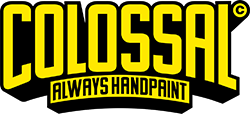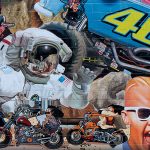Elevated Consciousness:
Colossal Media Paints the High Line
A walldog’s life isn’t exactly serene. But when you’re up above the city, away from all the traffic and commotion, it’s pretty damn peaceful. Maybe that’s why the High Line has gone from an architectural jewel to a jam-packed tourist destination — we love the hustle, but we relish the chance to rise above it all.

Friends In High Places
The High Line opened in 2009. Attendance exploded between then and now, from 2 million annual visitors in 2010 to 7.6 million in 2015. In that time, it’s also become a low-key public art powerhouse.
The first-rate collection is the most accessible in New York City. The park invites a diverse crowd through entrances scattered between the Meatpacking District and Hudson Yards. Admission is free. And you don’t have to “get” art to get up close and personal with work by world-renowned artists like Barbara Kruger, Kerry James Marshall, Henry Taylor, Ed Ruscha, Trisha Brown, John Baldessari, and Ryan McGinley.
Art Works
Art has always been a pillar of the High Line. Between 2000 and 2001, photographer Joel Sternfeld documented the rusty, overgrown elevated railroad. His photos proved to New Yorkers and policymakers that the old space held a raw beauty, and that it was worth reclaiming.
Friends of the High Line Co-Founder Robert Hammond recalls, “in one of his most famous photos, you can see the Empire State Building, an old metal railroad box, the tracks, the various plants, and lots of different buildings, old and new. Some people would just look at the photo and see a preservation project. Some would see horticulture. Rail buffs would get excited about the tracks. Some people imagined architecture. They would say, ‘Look, there’s the Empire State Building. This is right in the middle of Manhattan. You can build something up there.'”
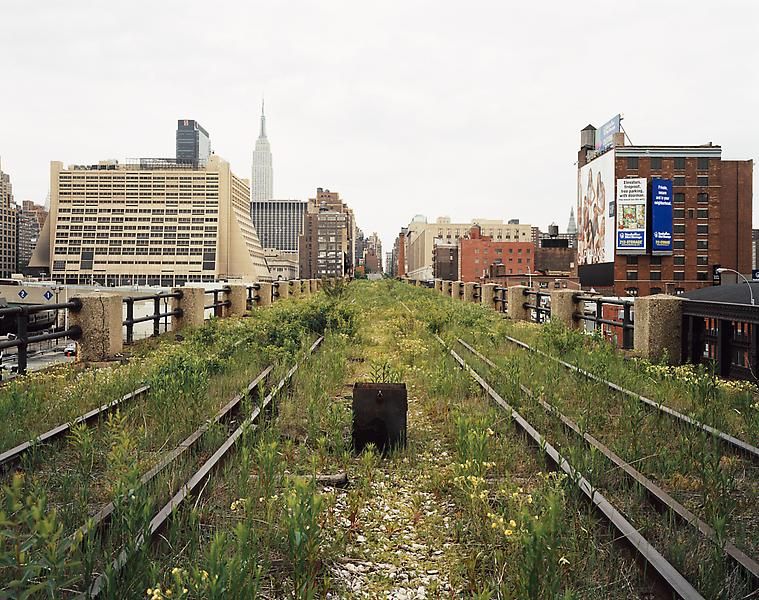
Urban Designers
To build on the park’s artistic leanings, Creative Time managed a series of installations when the High Line first opened. In 2011, a generous donation made it possible for the park to strengthen its dedication to the arts, and High Line Art was founded to develop a program with a unique identity. Installations with two or three artists quickly expanded to groups of 10 or more, and sculptures were joined by video art, billboards, and eventually, murals.



Colossal’s sign painters are the lucky dogs who reproduce the murals in the High Line’s museum-quality collection. Our canvas is a building on 22nd Street. We reclaim its unused space for art, just like the park reclaimed abandoned train tracks for public use. Every March, our crew hits the wall to paint an iconic mural, which is the most visible installation along the park’s 1.5-mile stretch.
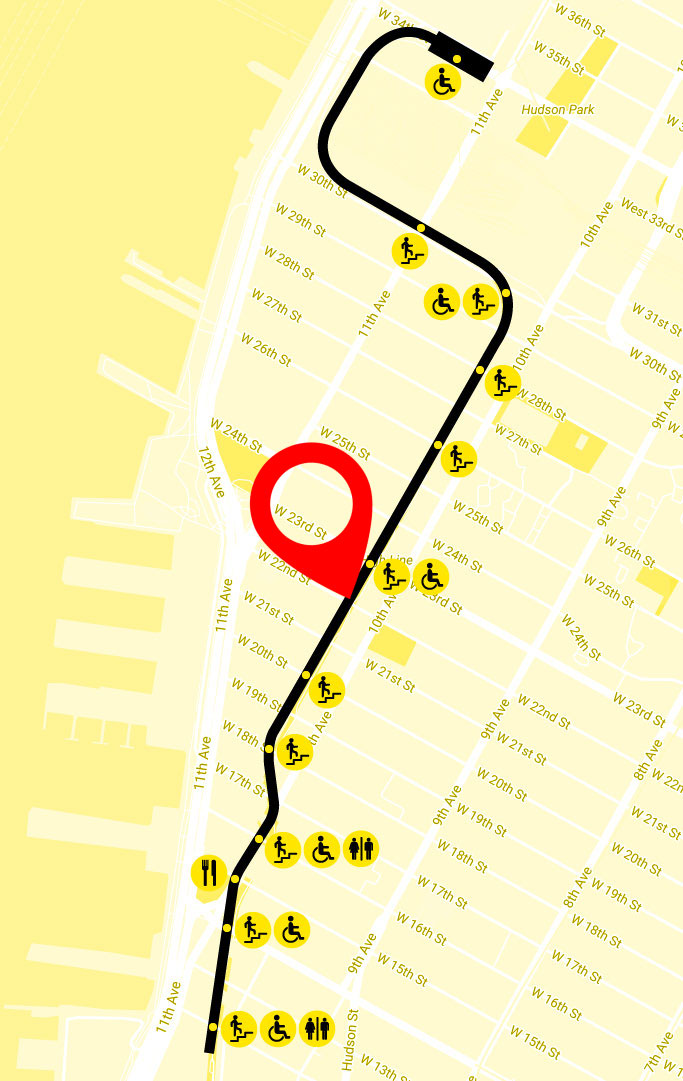
Colossal’s sign painters are the lucky dogs who reproduce the murals in the High Line’s museum-quality collection. Our canvas is a building on 22nd Street. We reclaim its unused space for art, just like the park reclaimed abandoned train tracks for public use. Every March, our crew hits the wall to paint an iconic mural, which is the most visible installation along the park’s 1.5-mile stretch.
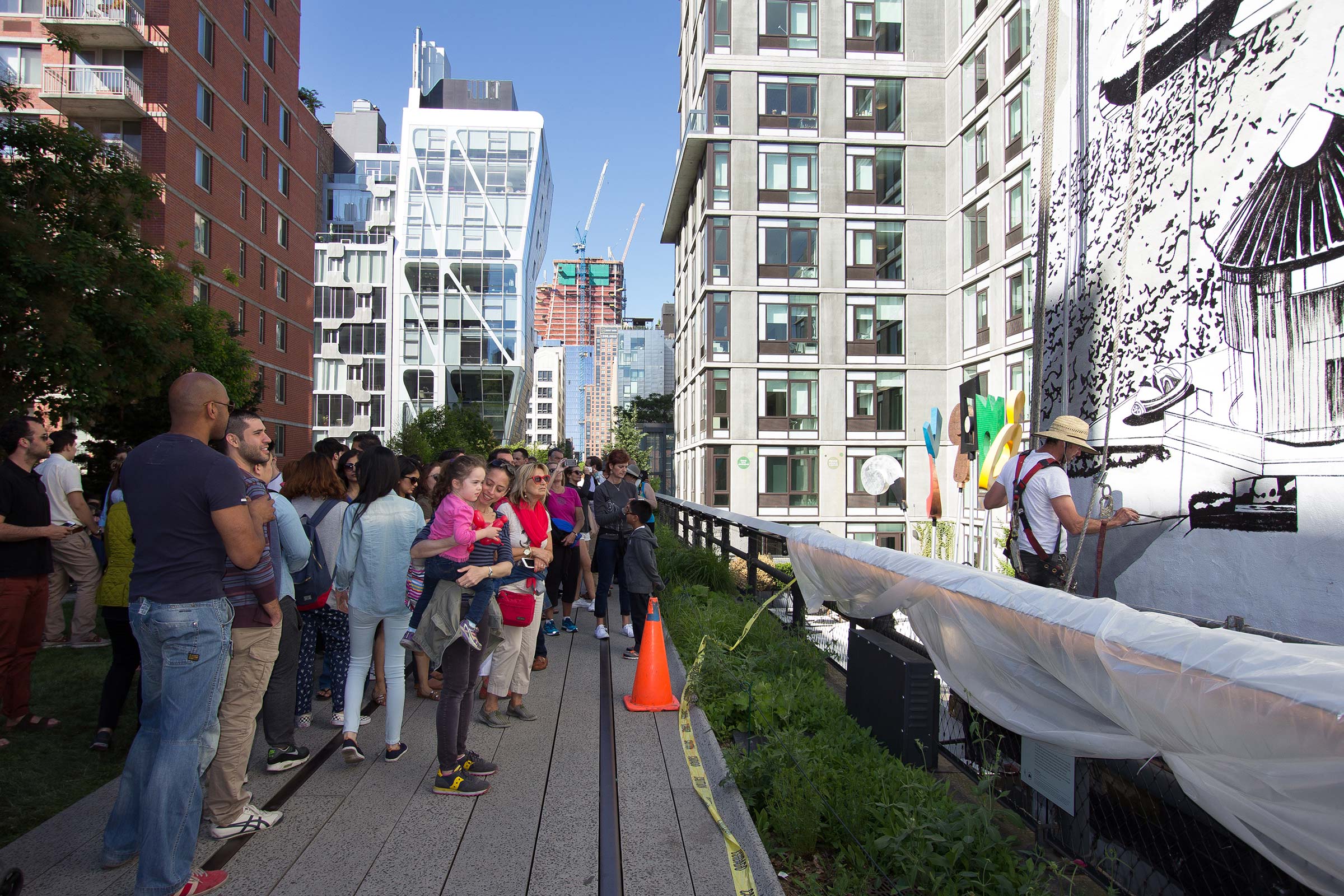
We’re honored to partner with such a unique institution. It’s a privilege to be one of the select few players that has this large-scale and long-lasting impact on the urban landscape. The enthusiasm surrounding the production process — the crowds gathering to watch the building transform — is the icing on the cake.
“Colossal adds an extra element of excitement to our murals on the High Line,” says Jordan Benke, Production Manager for High Line Art. “Our visitors, who come from all over the globe, love to watch the murals unfold under the hands of Colossal’s talented team. No matter how close or far you are from the mural, the hand painted quality of the works makes them so much more vibrant, powerful, and rich than a wheat pasted poster or vinyl.”

Benke is responsible for the logistics and permitting of each piece, as well as finding the contractors who will turn an artist’s sketch into a fully realized piece of art that can withstand everything the weather and the millions of visitors might throw at it. He’s the one who found Colossal in 2011, while searching for a local sign painting company to install Ed Ruscha’s piece, Honey, I Twisted Through More Damn Traffic Today. “Colossal’s the only one that had the chops to get it done,” he says.
Since then, each mural has struck a different chord with visitors. Ruscha’s text spoke to growing crowds on the park’s paths and on the streets below. Marshall’s piece threw shade on gentrification while starchitects’ high rises took root around the park. Kruger’s political statement was… timely, to say the least.
Today, Henry Taylor’s the floaters, the most painterly of the lot (and the only mural that also exists on canvas), confronts 22nd Street with a cool gaze. You can check out the photos on our flickr, but we really recommend seeing this one in person.
